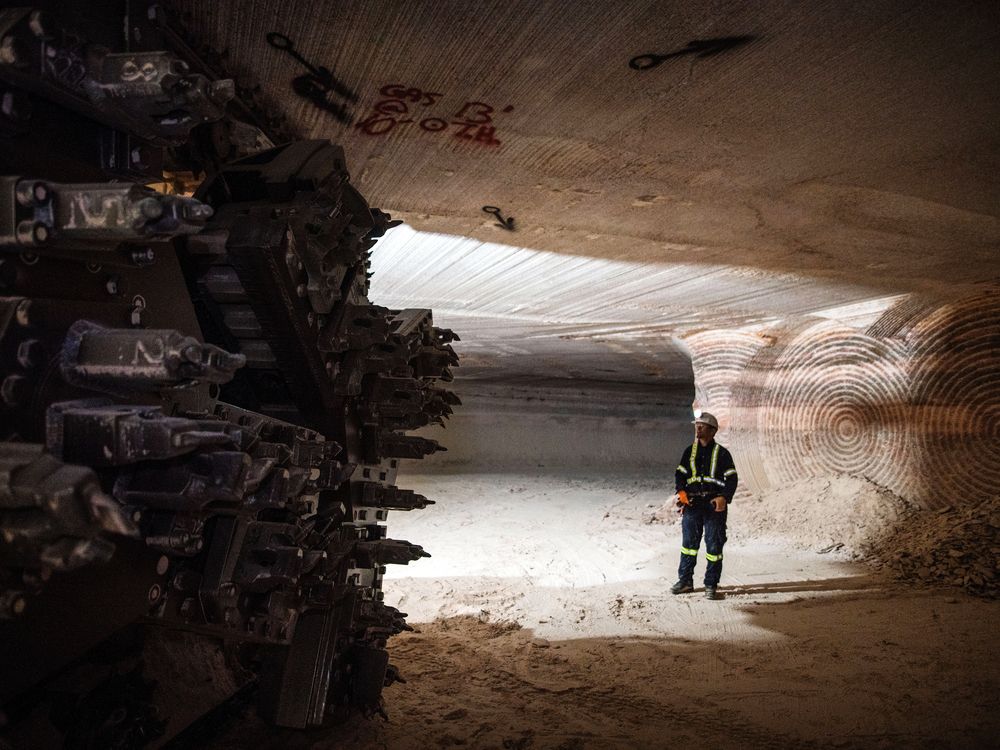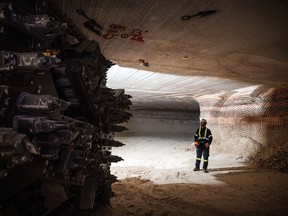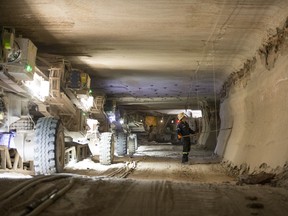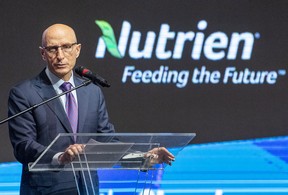Nutrien predicts banner year ahead as global uncertainty sends potash soaring

Fourth-quarter revenue beats expectations amid record potash sales

Article content
Nutrien Ltd., the world’s largest potash producer, reported fourth-quarter revenue that beat analyst expectations, and predicted 2022 would be another banner year for its two main businesses, fertilizer and farm retail.
Advertisement
Story continues below
This advertisement has not loaded yet, but your article continues below.
Article content
The Saskatoon-based agricultural behemoth said on Feb. 17 that it quickly ramped up production and sold a record 13.6 million tonnes of potash in 2021 as demand reached record levels and prices soared amid supply constraints and uncertainty around the effect of sanctions imposed on Belarus, a major producer.
Meanwhile, retail sales of fertilizer and crop nutrients also surged as food security concerns grew.
The company announced record adjusted EBITDA for the year of US$7.1 billion. It expects retail fertilizer margins to return to historical levels, a sign that it is expecting a return to normalcy in the supply chain and on food security issues. Still, it said crop prices remain high, and therefore many farmers will continue to invest in fertilizer. The company said it is expecting record potash sales again, and strong markets for its other fertilizers, nitrogen and phosphates.
Advertisement
Story continues below
This advertisement has not loaded yet, but your article continues below.
Article content
Nutrien shares climbed about three per cent on the news.
“The advantages of Nutrien’s integrated business were demonstrated in 2021 as we delivered record financial results,” Ken Seitz, Nutrien’s interim CEO, said in a press release.

The company delivered $2.47 in earnings per share, more than the $2.36 Citi analyst P.J. Jukevar had predicted.
Jukevar predicted the strength from potash would continue, and wrote that the company’s diversification, between fertilizer production and retail, gives it protection that enables it to trade at a higher multiple. Risks to Nutrien’s bottom line include rising natural gas prices, which affect the nitrogen market, and potential fluctuation in crop prices, he said.
Advertisement
Story continues below
This advertisement has not loaded yet, but your article continues below.
Article content
“Potash strength is expected to continue,” Jukevar wrote.
Patrick Donnelly, a senior analyst at Third Bridge, a research consultancy, wrote that fertilizer producers are experiencing the highest pricing environment since 2013, and Nutrien recently locked in an agreement with China and India to supply potash at US$590 per metric ton.
Potash strength is expected to continue
P.J. Jukevar
“This is a price point which is double what the product was selling at a year ago,” Donnelly wrote.
Seitz said the company’s six potash mines in Saskatchewan mean it has enough idle capacity and the flexibility to increase production in response to a rising price environment.
Next year, the company said it expects “record potash sales volumes” again, estimating between 13.7 to 14.3 million tonnes.
Advertisement
Story continues below
This advertisement has not loaded yet, but your article continues below.
Article content
The global outlook for potash is in flux as both Russia and Belarus, which together account for 37.6 per cent of global production, face potential sanctions that could limit their ability to export potash.
Russia would face sanctions from the United States and its allies if it makes good on threats to invade Ukraine. Meanwhile, Belarus has been dealing with Western sanctions, including from Canada, since 2020 amid accusations of state-sponsored violence that interfered with free and fair elections, and human rights abuses.
Whether Belarus will continue to move its potash through Lithunian ports remains uncertain.
“If there was a more significant long-term impact on global supply, Nutrien has the capability to further ramp up production by hiring additional employees and incurring some small incremental capital expenditures,” the company said in a press release.
Advertisement
Story continues below
This advertisement has not loaded yet, but your article continues below.
Article content
The company’s stock has been one of the best performers since the pandemic started, rising from $40.14 in March 2020 to $95.28.
But questions have swirled among investors as the company churned through two chief executives during that time period, with little to no explanation given for either departure.

Chuck Magro, who helped lead the merger of Calgary-based Agrium Inc. and Saskatoon-based Potash Corp. of Saskatchewan that created Nutrien in 2018, departed in April 2021 with no explanation offered. The company said only that he would “pursue other opportunities.”
In November, Magro took over as chief executive of Delaware-based Corteva Inc., the agricultural spin off from the breakup of DowDuPont in 2017. Corteva’s market capitalization of about US$37.4 billion makes it about 15 per cent smaller than Nutrien.
Advertisement
Story continues below
This advertisement has not loaded yet, but your article continues below.
Article content
Mayo Schmidt, who had been chair of Nutrien’s board, replaced Magro as CEO, but left eight months later, in January, without explanation.
-

Nutrien eyes potash production boost amid turmoil in Russia, Belarus
-

‘The smart move is to buy it and break it up’: Speculation mounts as BHP examines Nutrien
-

‘Unexpected twist’ at high-flying Nutrien as second CEO resigns in less than a year
-

Nutrien CEO Mayo Schmidt sees farmers spending big on fertilizer
Russ Girling, chair of the board and former CEO of TC Energy Inc., said Nutrien has started a global search for a new leader.
The departures come as Australia’s BHP Group Ltd. makes a long anticipated move into potash. BHP, the largest mining company in the world, announced in August that it would add potash production, a vastly different commodity than the iron ore, copper and other metals in its portfolio.
Advertisement
Story continues below
This advertisement has not loaded yet, but your article continues below.
Article content
BHP is moving forward on a $5.7-billion investment in Jensen, which will be the largest potash mine in the world, and located in Saskatchewan, where it has accumulated an array of mineral claims alongside Nutrien. Jensen is expected to come online later in the decade, and will be capable of producing 4.5 million tonnes of potash per year.
While there has been speculation among analysts, investors and the media that the two companies are negotiating to work together, possibly with Nutrien operating BHP’s potash mine, or an outright acquisition, there has been no official word from either one.
Reuters reported in January that Seitz said that in his short time at the helm, “Nutrien has not discussed any form of potash partnership with BHP Group.”
• Email: [email protected] | Twitter: GabeFriedz
Advertisement
Story continues below
This advertisement has not loaded yet, but your article continues below.









